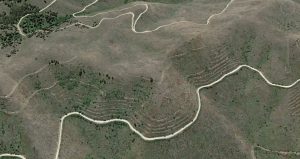As a card-carrying woman, I got a chuckle out of this from the Center for Western Priorities.. There are actually plenty of women out there… who wouldn’t have had these nomination difficulties. Basically everyone knows that. Or maybe the Committee would like to see more people of color? And of course, being a former career person, it’s hard for me to imagine that lacking one link in the political chain of command will put “the commitments in the IRA at risk.” From my contacts, it appears that Daniel-Davis is actually doing the job as acting.. and therefore all the same work is getting done.
But perhaps being acting and signing decisions is a problem (as per Pendley and the court case).
A federal judge has ruled that a controversial Trump official who has overseen a vast weakening of public lands protections cannot continue in his position since he has not been approved by the Senate.
Call me crazy, but maybe a better solution would be to nominate a candidate that the Senate will confirm? Pretty much everyone could come up with a list, including people of color. I continue to wonder what all this is really about. It seems hard to argue on the one hand, that the Biden Admin’s goals won’t be met without this one position… and it’s so important.. it’s not worth our time to find one of the many that the Committee could support. It seems like a bit of a rerun of the Tracy Stone-Manning nomination. But I don’t think for a minute it has to do with gender.
The U.S. Senate seems to be singling out and obstructing qualified women nominated to leadership positions in the U.S. Department of the Interior, writes Center for Western Priorities Executive Director Jennifer Rokala. The Senate committee tasked with advancing these nominations to the full chamber, chaired by Senator Joe Manchin, has taken nearly a full month longer on average to vote on female nominees than male nominees.
From Interior Secretary Deb Haaland to Bureau of Land Management Director Tracy Stone-Manning to Laura Daniel-Davis—who was nominated to be Assistant Secretary of the Interior for Land and Minerals Management in 2021—women nominated for leadership positions in the Interior Department have faced intense scrutiny and undue delays by male members of the Senate Energy and Natural Resources Committee throughout their confirmation processes. Daniel-Davis, who is still not confirmed, was asked to appear twice before the committee over the past year and a half—a highly unusual occurrence.
The Interior Department is the steward of our public lands, water, wildlife, and natural resources. It is also a leader in promoting our country’s clean energy future, as the agency charged with permitting large-scale onshore clean energy and offshore wind development. The position of Assistant Secretary of the Interior for Land and Minerals Management oversees almost all of this development, making it a central role in realizing Biden’s ambitious climate and clean-energy goals.
Over 100 women who have worked with Daniel-Davis throughout her career are calling on Senate Majority Leader Chuck Schumer to bring her nomination up for a vote in the Senate before the end of the year, when her nomination is set to expire. Schumer has so far prioritized the confirmation of judicial nominees.
“It is not an exaggeration to suggest that leaving this position vacant puts the commitments agreed to in the IRA at risk, not to mention the president’s clean energy and climate goals,” the letter states.
For those of you not following this..
The assistant secretary for land and minerals management oversees four bureaus within Interior: the Bureau of Land Management, the Bureau of Ocean Energy Management, the Office of Surface Mining Reclamation and Enforcement and the Bureau of Safety and Environmental Enforcement.
And BOEM seems to be doing pretty well without an assistant secretary..example.. Or maybe an assistant secretary would help with.. hiring more BLM folks? See today’s other post.

